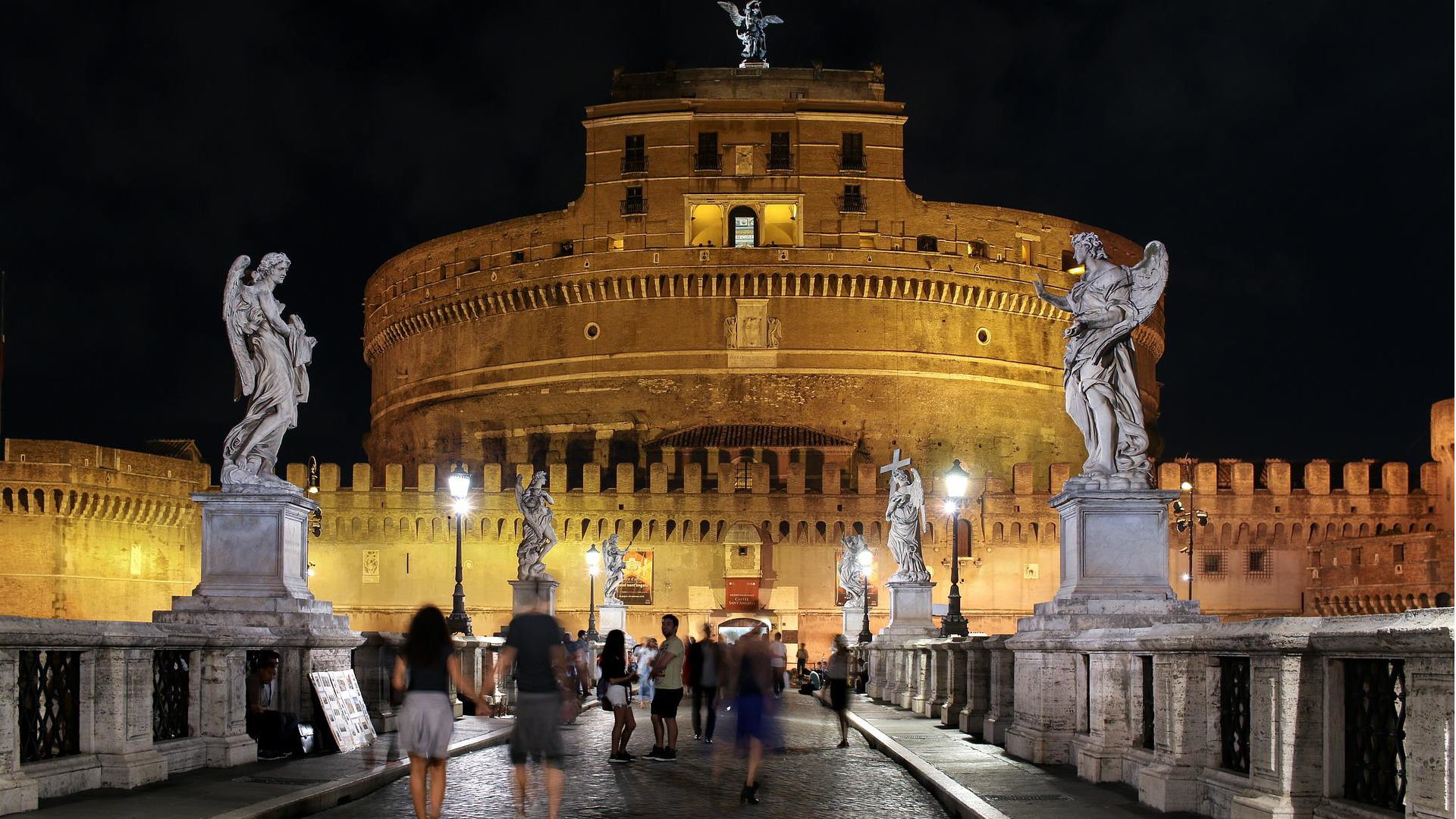
In addition to its monuments, palaces and churches, a city is also made up of the memories it evokes and the life that passes through it. A daily life that, in Rome, has always been marked by rites, holidays, anniversaries, celebrations: a full program of fixed events which, with their load of traditions, represented a (religious or civil) occasion for reflecting, meeting, sharing and having fun, season after season.
If some of them have not resisted the oblivion of time or have lost part of that sense of perfect wonder that they used to give to the Romans and to the many visitors of the city, others are still alive and kicking, even richer today than in the past. And some others, even if born in more recent years, are already part of the modern and contemporary “traditions” of the city.
To fully experience Rome and immerse yourself in its history, month by month we will present you some of the special days and moments of the city, the past and present one – the most heartfelt or awaited events, or even simply the most curious ones.
-
Apollo Games, 6-13 July
-
St. Camillus de Lellis, 14 July
-
Our Lady of Mount Carmel and the Festa de Noantri, from 16 July
-
The bombing of San Lorenzo, 19 July
-
St. Anne and the procession of bellies, 26 July
Apollo Games, 6-13 July
It might seem somewhat predictable to celebrate Apollo, the god who drives the solar chariot, under the burning sun of July. But it all actually began in 212 BC, at the height of the Second Punic War, when the oracles advised the Romans to seek divine help to change the inertia of the war against Carthage. For the remedy to prove effective it took another decade or so: in the meantime, however, the Ludi Apollinares had been so successful with the public that they began to be celebrated every year. Starting with Augustus, who had chosen Apollo as his patron deity, they became indeed the most important games in the Roman calendar. The celebrations thus came to last as long as eight or nine days: they took place mostly at the Circus Maximus where, as it was customary, the sacrificial rites were followed by theatrical performances, horse races and hunting parties. The dedication of the first and very ancient Temple of Apollo in Rome was also celebrated on the last day. If the weather is not too muggy, we can admire its imposing remains between the Theater of Marcellus and the Portico of Octavia. Part of its 13-meter long basement is preserved in the cloister of the church of Santa Maria in Campitelli, while the Centrale Montemartini museum has a reconstruction of its marvelous pediment.
St. Camillus de Lellis, 14 July
Restless, quarrelsome, with the vice of gambling and the disorderly life of soldiers of fortune, in his first 24 years of life Camillus was not what you would call a saintly man. Then, in 1575, he is enlightened by God’s grace and decides to embrace religious life. But it is a chronically ulcerated foot that spells his fate: to cure himself, he returns a second time to Rome, to the hospital of San Giacomo degli Incurabili where he had already been in his wild years, and here he understands and elaborates in definitive terms his vocation, which will lead him to be remembered as the first great reformer of the nursing profession and of the caregiving organization. From that moment he would devote himself body and soul to the care of the most seriously ill and needy and to the assistance of the dying, in the hospitals of San Giacomo and Santo Spirito in Sassia, founding in 1582 the Company of the Ministers of the Sick, which was formally recognized as an Order a few years later. When he died on 14 July 1614, he was buried at the high altar of the church of Santa Maria Maddalena, adjacent to the Order’s general house, where he still rests. And where, until the early 20th century, Romans went every 14 July to receive a special blessed water, laced with a tiny amount of powder from the saint’s tomb and capable of curing all kinds of ailments.
Our Lady of Mount Carmel and the Festa de Noantri, from 16 July
A surprising mix of history, faith, art and a long-standing folk tradition. We are around the mid-16th century and a large wooden statue found near the mouth of the Tiber has just arrived at the port of Ripa Grande: it depicts the Virgin Mary and fishermen entrust it to the Carmelite friars of the church of San Crisogono in Trastevere. Placed on an imposing Baroque “machine”, the bejewelled and elaborately-dressed statue of the “Madonna Fiumarola”, that is “Our Lady of the River”, was thus carried in procession through the streets of the Rione, at least since 1603, on the occasion of the liturgical feast of Our Lady of Mount Carmel, to whom the Carmelites had been devoted since the 13th century. As the centuries went by, the statue was transferred first to the church of San Giovanni dei Genovesi and then to the church of Sant’Agata in the early 20th century, a home the statue only leaves once a year on the first Saturday after the feast day of the Blessed Virgin of Mount Carmel on 16 July. Meanwhile, however, since 1927, the celebration also acquired a more festive and secular imprint with the institution of the “Festa de Noantri”, the festival of us others – a name that highlights the “otherness” of the natives, the Trasteverini, in opposition to all other Romans coming from the other side of the Tiber. Although in a lesser tone than in the past, even today the streets of Trastevere come alive with stalls, markets, taverns open to all passersby, events and street performances. The heart of the festival is religious, however, and each year the venerated image is carried several times in procession, first to the church of San Crisogono, where it remains for eight days, then along the river from which it re-emerges, and finally, after a night of vigil and prayer in the Basilica of Santa Maria in Trastevere, back to the church of Sant’Agata.
The bombing of San Lorenzo, 19 July
In the middle of the summer of 1943, while Mussolini was in Feltre to meet Hitler, Rome abruptly awakened from the illusion of being spared from attacks. At 11 am on 19 July, American bombers flied over the skies of the San Lorenzo district, and then the surrounding areas, dropping more than 4,000 bombs in just over two hours. They hit the freight yard and railroad hubs, but also the ancient Basilica of San Lorenzo and the tombs of the Verano cemetery, while all around collapsed buildings and the streets filled with chasms: more than 1,500 people lost their lives, while countless other civilians were injured and forced from their homes. Only six days later, on the night of 24-25 July, the Great Council of Fascism at Palazzo Venezia sanctioned the end of the Fascist regime, but until the liberation of Rome on 4 June of the following year, the city was still hit from the sky another more than 50 times. However, no other bombing had such a psychological impact as the one on San Lorenzo, however, and its anniversary has been the subject of an uninterrupted stream of commemoration, with official ceremonies attended by city authorities and initiatives organized by neighborhood committees and associations. In the park on Via Tiburtina, a monument commemorates the many fallen, while the bronze statue on the square in front of the Basilica recalls the visit of Pius XII, who arrived unescorted in the devastated neighborhood soon after the air attack, to symbolically embrace the Romans while rescue operations were still under way.
St. Anne and the procession of bellies, 26 July
According to the apocryphal gospels, an angel announced to the future grandmother of Jesus the grace of a late pregnancy, which is why, in addition to holding a variety of patronages, St. Anne is still invoked as the patroness of mothers and women in labor. In the Western world, her cult spread gradually, but in Rome we already find her image in the 5th century mosaics of the triumphal arch of Santa Maria Maggiore and then, two centuries later, in the frescoes of Santa Maria Antiqua. Also always devoted to St. Anne were the Papal Grooms, the Palafrenieri, who were at first the papal stable attendants: in 1378, when they formed a confraternity, they therefore chose her as their patron saint, later naming the new church built for them by Vignola in the 16th century after her. In Papal Rome, on the liturgical feast of the saint, a most peculiar procession took place under the aegis of the Palafrenieri: the “Processione delle panze”, of the bellies, a very Roman synecdoche for women about to give birth. To the roll of drums, the procession moved solemnly from the church of Santa Maria in Portico in Campitelli, opened by the Papal Grooms on horseback with their banners. The women followed on foot along with the “Laternoni”, the people in charge of carrying the processional lanterns. The heavy statues with the Virgin and St. Anne, now in the church of Santa Caterina della Rota, closed the group. Just before arriving at their destination in the church of the Palafrenieri, as the long line reached the Sant’Angelo Bridge, the Castello cannon would salute the procession with a blank shot. Wrapped in cloaks that covered their faces, the participants also received a special gift: a blessed candle that, lit at the beginning of labor, would facilitate and speed up the delivery, hopefully “within the candle burn time”.
August in Rome. Key dates and events (today as in the past)
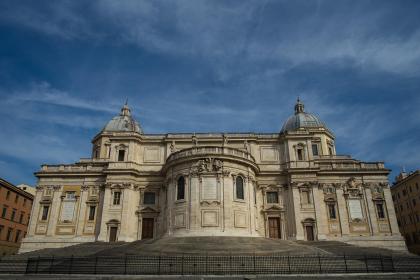
Septiembre en Roma. Cita con la tradición (de ayer y de hoy)
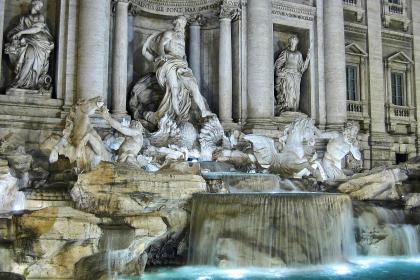
Circo Máximo
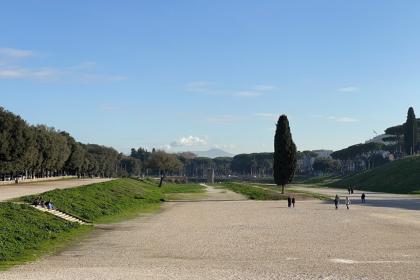
 Condividi
Condividi
Templos de Apolo Sosiano e de Bellona
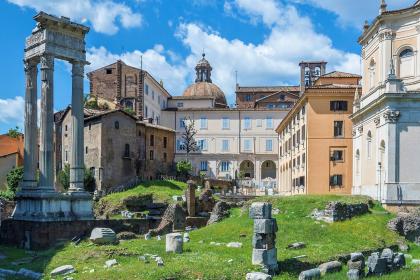
 Condividi
Condividi
Complejo monumental de Santo Spirito en Sassia
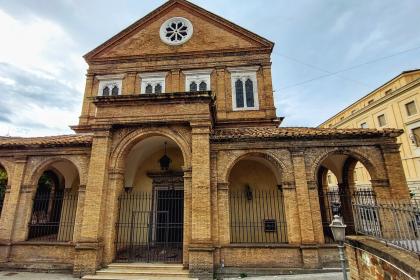
 Condividi
Condividi
Iglesia de Santa María Maddalena en Campo Marzio
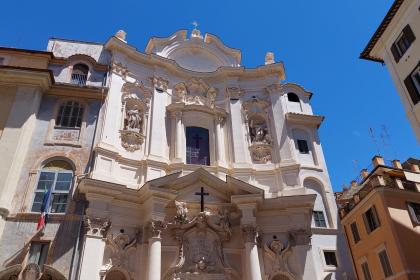
 Condividi
Condividi
Rione XIII - Trastevere
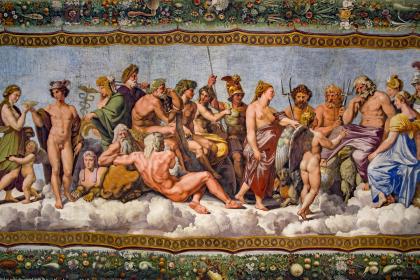
Basílica de San Crisógono
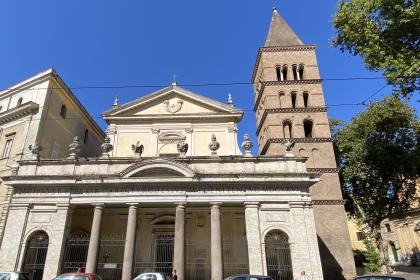
 Condividi
Condividi
Iglesia de Sant’Agata en Trastevere
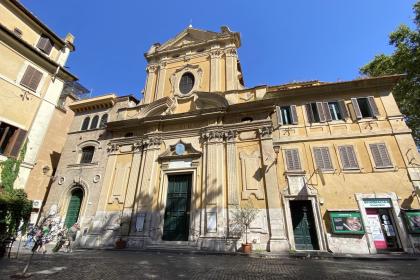
 Condividi
Condividi
Basílica de San Lorenzo Extramuros
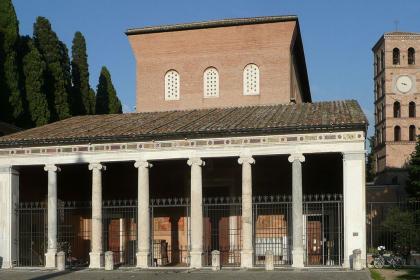
 Condividi
Condividi
Siete iglesias de las corporaciones gremiales
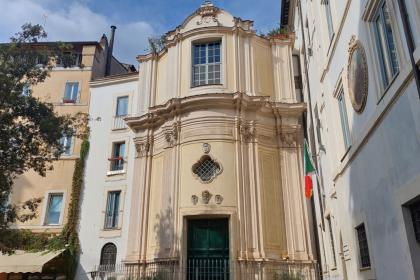
Un patrimonio di storie e tradizioni da scoprire nelle chiese delle corporazioni
Iglesia de Sant'Anna dei Palafrenieri
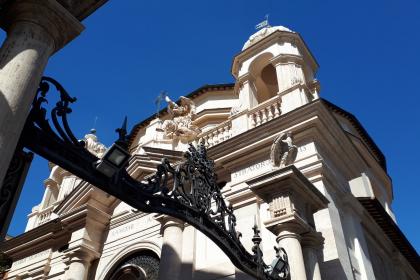
 Condividi
Condividi











































